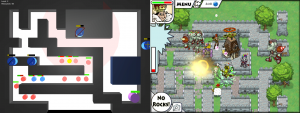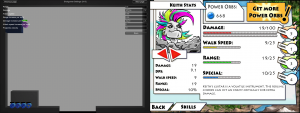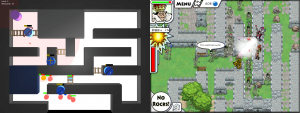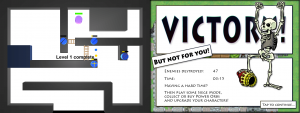Siegebreaker – a free-to-play iPhone/iPad game by Crazy Monkey Studios, based on a prototype made by PreviewLabs – has been out for its first couple of weeks now.
During a brainstorm we organized for our customer Crazy Monkey Studios in 2010, we asked ourselves what it would be like if you could move the towers in a tower defense game. This little brainstorm exercise triggered our imagination: Towers were replaced by RPG-like heroes, walls were added to allow building mazes, and a king was added as moveable target for the enemies. The core concept for Siegebreaker was born!
The reviews aren’t lying – for example at AppGamer.net, the game gets a 9 out of 10 for gameplay!
July 2010, Wouter Boudry – one of our prototyping specialists – started developing the prototype. As usual, a lot of questions were still open: How much screen space should the units take? Should all the enemies take the shortest route to the king, or should they rather swarm towards him? And most important: will the core gameplay be strong enough to be the foundation for a great game?

Left: The prototype graphics have been kept simple and clean, allowing to focus all budget and attention on the gameplay.
Right: Crazy Monkey Studios developed a vibrant art style featuring animated characters which were drawn frame-by-frame using old school methods.
To help answering these questions, we’re using our tuning system. This system allows us (and the customer) to play around with different settings and different feature combinations.

Left: The tuning parameters that were available in the prototype for the ‘shotgunner’ hero.
Right: In the final game, the heroes can be upgraded using power orbs.
While prototyping, we also discovered gameplay issues. For example, it could take a long time to make a unit to walk to a position on a nearby wall, having to follow the twists and turns of the maze. Wouter tackled this by allowing to build bridges between walls, allowing the heroes to move around more easily.

Left: Bridges form convenient ways to move to other parts of a level.
Right: In the final game, gates can be traversed.
Fast-forwarding to December 2, 2011, Siegebreaker has been released. They did a great job further extending the core concept for the full game, and came up with a colorful and vibrant art style. The reviews aren’t lying – for example at AppGamer.net, the game gets a 9 out of 10 for gameplay!

